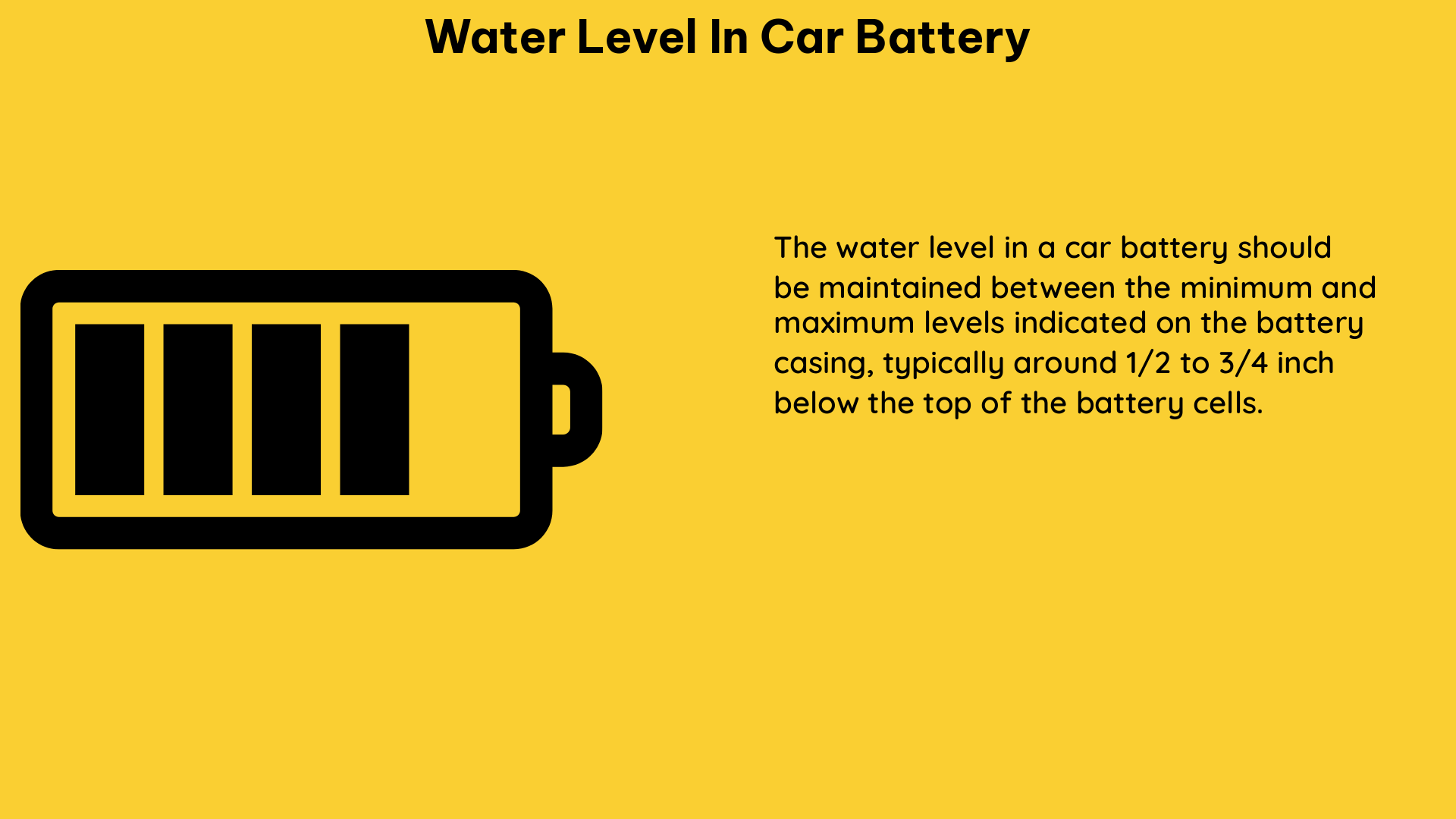The water level in a car battery, also known as the electrolyte level, is a crucial factor in maintaining the battery’s health and longevity. The electrolyte, a mixture of sulfuric acid and water, plays a vital role in the chemical reactions that generate electricity in the battery. Proper maintenance of the water level is essential to ensure optimal performance and extend the battery’s lifespan.
Understanding Acid Stratification
According to Battery University, the electrolyte in a stratified battery concentrates at the bottom, starving the upper half of the cell. This can lead to reduced performance and a shorter battery life. Acid stratification can occur due to several factors:
- Low Charge: If the battery dwells at a low charge, it can contribute to acid stratification.
- Lack of Full Charge: Batteries that never receive a full charge are more susceptible to acid stratification.
- Shallow Discharges: Repeatedly discharging the battery only partially can also cause acid stratification.
- Power-Robbing Accessories: Driving a car for short distances with power-robbing accessories engaged can contribute to acid stratification.
Preventing Acid Stratification

To prevent acid stratification and maintain the optimal water level in your car battery, follow these recommendations:
- Fully Saturated Charge: Allow the battery to undergo a fully saturated charge of 14-16 hours.
- Maintain Charge: Keep the battery charged and avoid deep discharges.
- Electrolyte Level: Never allow the electrolyte to drop below the tops of the plates.
- Water Addition: When the level is low, add only enough water to cover the exposed plates before charging. Fill to the correct level after the charge is complete.
- Water Quality: Use distilled or de-ionized water, as tap water may contain minerals and chemicals that can reduce battery life.
Checking the Electrolyte Level
When checking the electrolyte level, it is crucial to take the necessary safety precautions:
- Wear Protective Gear: Wear safety goggles and disposable gloves to protect your eyes and skin from the electrolytes.
- Clean the Battery: Clean off any dirt or debris from the top of the battery.
- Open the Ports: Open the ports or caps to access the fluid level in each cell.
- Inspect the Fluid Level: Check if the cells are covered in an equal amount of fluid. If not, add just enough water to cover the plates.
- Wipe and Replace: After adding water, wipe up any spills and replace the port covers.
Optimal Water Level Measurements
The optimal water level in a car battery can vary depending on the battery type and manufacturer’s specifications. However, as a general guideline:
| Battery Type | Optimal Water Level |
|---|---|
| Flooded Lead-Acid | 1/2 to 3/4 inch above the plates |
| Absorbed Glass Mat (AGM) | Plates should be fully submerged |
| Gel Cell | Plates should be fully submerged |
It’s important to refer to the battery manufacturer’s recommendations for the specific water level requirements for your car’s battery.
Monitoring and Maintenance
Regular monitoring and maintenance of the water level in your car battery are essential to ensure its optimal performance and longevity. Here are some additional tips:
- Check Frequency: Inspect the water level every 3-6 months, or as recommended by the battery manufacturer.
- Charging Cycles: Pay attention to the battery’s charging cycles and avoid deep discharges.
- Environmental Factors: Consider the climate and driving conditions, as extreme temperatures can affect the water level.
- Battery Replacement: Replace the battery if it consistently requires frequent water top-ups or shows signs of deterioration.
By following these guidelines and maintaining the optimal water level in your car battery, you can ensure its reliable performance and extend its lifespan, saving you time and money in the long run.
Reference:
- Acid Stratification and Surface Charge
- How to Check Car Battery Water Levels
- Additives to Boost Flooded Lead-Acid

The lambdageeks.com Core SME Team is a group of experienced subject matter experts from diverse scientific and technical fields including Physics, Chemistry, Technology,Electronics & Electrical Engineering, Automotive, Mechanical Engineering. Our team collaborates to create high-quality, well-researched articles on a wide range of science and technology topics for the lambdageeks.com website.
All Our Senior SME are having more than 7 Years of experience in the respective fields . They are either Working Industry Professionals or assocaited With different Universities. Refer Our Authors Page to get to know About our Core SMEs.